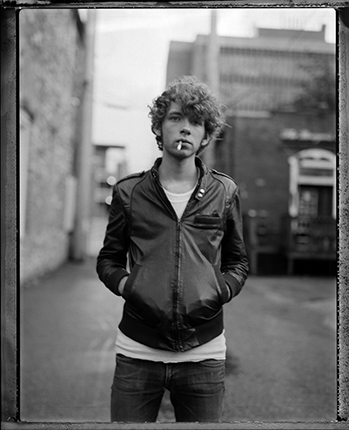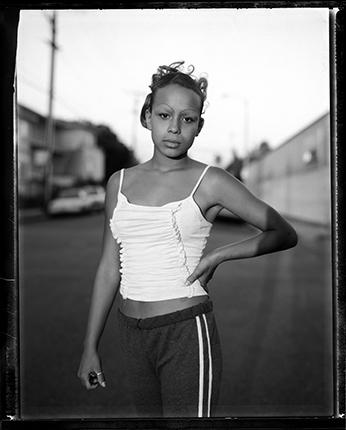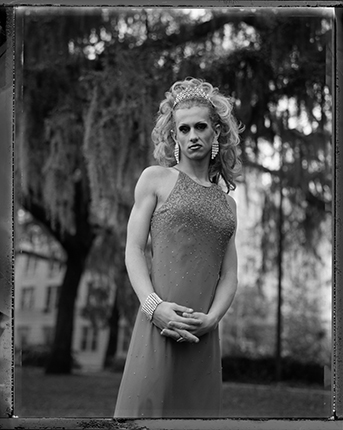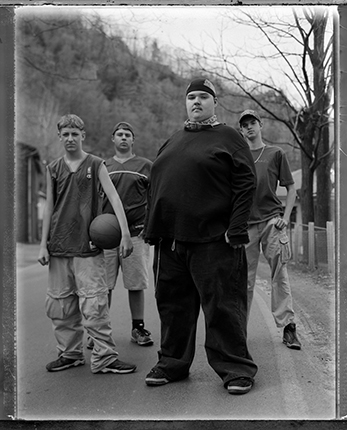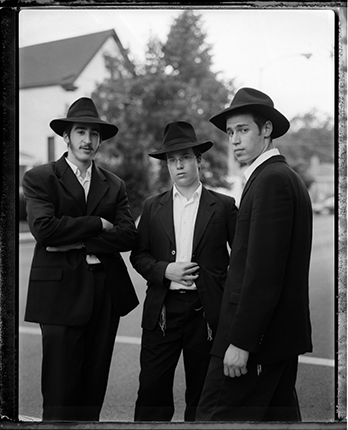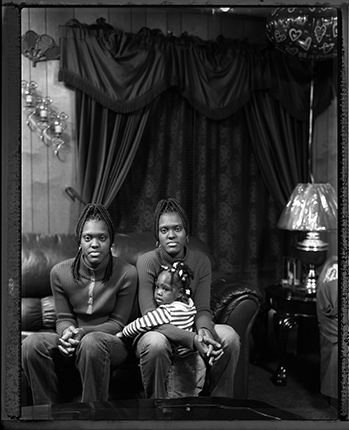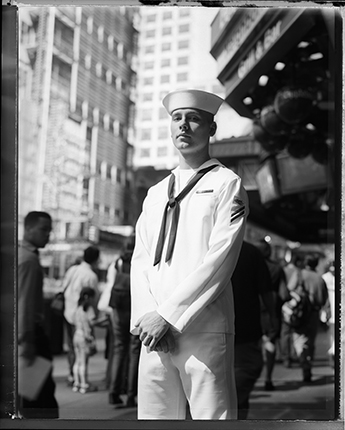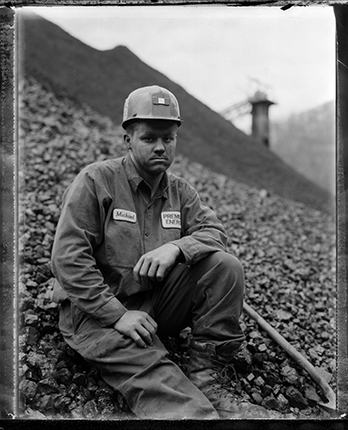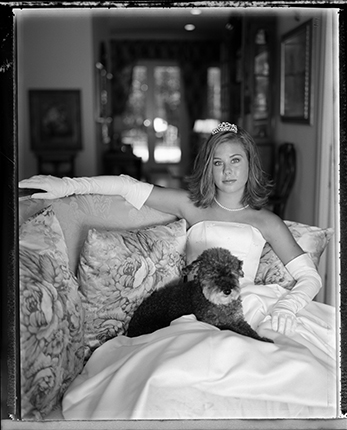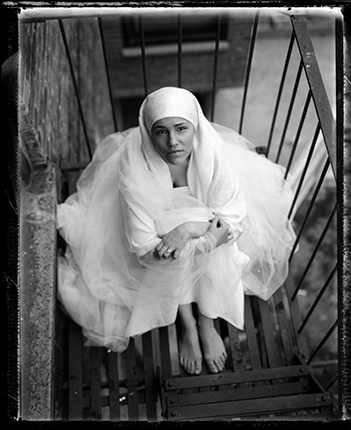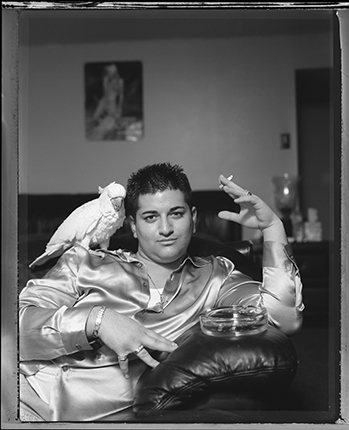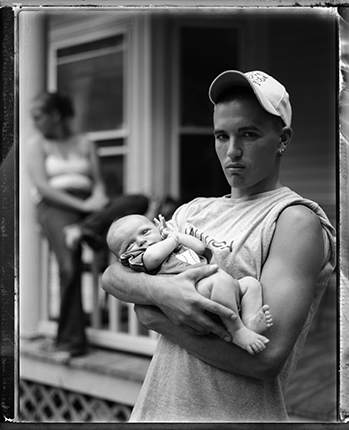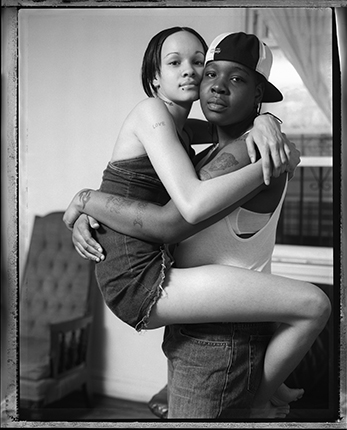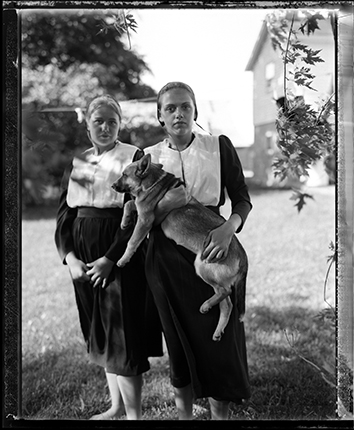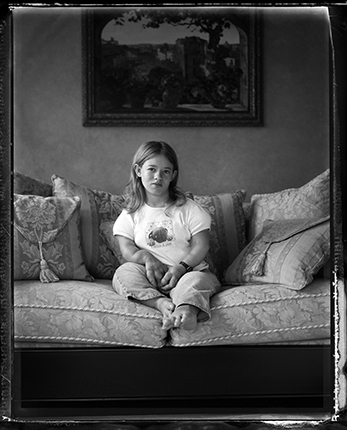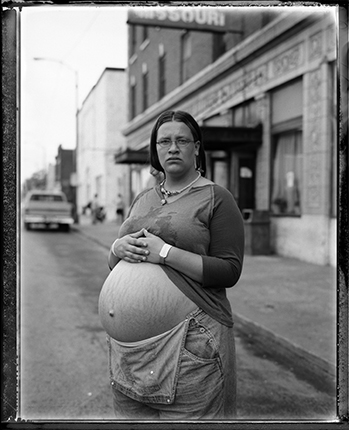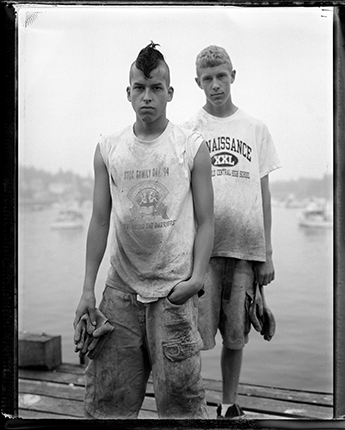This story begins in the summer of 2001, when a friend invited me to spend a couple of weeks with her extended family in a remote cabin in Canada. Seeking an escape from humid New York, I gladly accepted. The cabin was filled with teenagers, an age group that didn’t exist in my world at the time, and I was riveted by the excitement, openness, vulnerability, and idealism with which so many young people, regardless of circumstance, are infused. I spent most of those two weeks in the woods photographing them and listening to the stories of their lives.
Surprisingly, the photographs I brought back with me to Brooklyn had managed to capture the intensity and complexity of these blossoming youngsters. It was clear that I had encountered something – a shooting style and subject matter – that I had to pursue. I walked the streets and subways of New York City looking for more teenagers to photograph. In that pre-digital age, the Polaroid’s capacity to generate an instantaneous record piqued my subjects’ curiosity and, because I was also interested in hearing their stories, it was remarkably easy to convince them to work with me. My approach was to find and introduce myself to young people, make their portraits, engage them in the process of shaping the image, and only then find a quiet spot in which to ask questions and learn more about their lives. The process was profoundly collaborative – the teenagers viewed their images and evaluated how they wanted themselves to appear in the final shot, in addition to sharing the details of their lives. This gave us a shared experience, an artistic bond and a personal connection.
Each teen was so unique, authentic, and compelling – I found that I couldn’t get enough. And I felt I was growing as a human being; their stories were enriching mine. Before long, I became transfixed by the notion of discovering the “American Teenager.” It became clear that I couldn’t accomplish this by staying in New York, so I decided to get in the car and drive. In March 2002, I embarked on the first of eight trips that I would eventually take over the course of four years. In the end, I traveled 21,731 miles across the nation, met thousands of people, and formally photographed and interviewed 419 teenagers, all of whom are represented in my book.
My commitment to shooting this project in a particular style – photograph first, ask questions later –was very different from how I was trained as a photojournalist. In making these portraits, I learned that if I knew too much about my subject before I shot, the results would be more about pre-drawn conclusions and less about the person in front of me. I continued to use my “Polaroid method” so that the kids could see the results of our work immediately. This engaged them in the collaboration and generated trust. After the shoot, I began my interview in a quiet, improvised place; when I had to, I used my car. The car actually helped to muffle the sound of nearby traffic and the voices of passers-by. It also provided a safe space for a more intimate exchange. Each teen was asked the same 25 questions. The text you see in the book and in this exhibition is excerpted verbatim from their responses.
Sometimes I met my subjects through family, friends, and schools. But more often than not, I met them on the street and had to convince them that, although I was a stranger with out-of-town plates, they could trust me; I was genuinely interested in what they had to say. I was not there to judge or rescue these kids. My job wasn’t to answer their questions with any authority, only to ask and record the response. When I started, I had no idea that teenagers liked – indeed, needed – to talk about themselves, and was continually amazed at how unguarded they were. Many of those I spoke with made it clear that our conversations gave them an opportunity to be listened to in a way that they had been lacking. This gave me a responsibility and I’ve wrestled mightily with how to represent them. I do not want to gloss over the hardships and indignities that they have faced. Yet it is equally important to demonstrate their resilience by recording the hopes they expressed for the future. The truth is, it was stunning to witness the coexistence of both hard experience and genuine optimism.
It was an honor to be allowed into their lives and it is deeply important to me to do their images and stories justice. I want you to know these young people as I do, and yet I know that is impossible. I can only hope, with the strength of my subjects’ hope, that in these photographs you will recognize the extraordinary richness of American diversity; the breathtaking ethnic, religious, economic and cultural eclecticism that defines this generation of Americans – a generation twice the size of the baby boomers. This diversity is both a source of strength, and a source of tension. How do we create unity within diversity? How do we embrace difference within unity? How do we find something in common when we are all so different? I have learned that If we are attentive enough, and if we are patient, by looking at images of others and reading about their inner lives and struggles, we will recognize what we have in common, gaining not just one, but many new perspectives, empowering us to combat the isolation that is part of the human condition. After all, a democracy – and America claims to be the ultimate democracy – requires not just acknowledgment and tolerance, but an embrace of its own diversity.
As a whole, the American Teenager project underscores the similarity and diversity that make up this country, and this generation, and reminds us that people are not necessarily what they appear to be. I hope it will allow families in Jamesport, Missouri to learn about what they share or don’t share with families in Wayland, Massachusetts. There are teenagers in every corner of America. In fact, each one of us was a teen once, and many of us will one day raise teenagers who will become adults – and leaders. It is undeniable that our children both reflect and affect whom we are as individuals and as a nation, and that by coming to know our children as they balance on the cusp of adulthood, we can get acquainted, or reacquainted, with ourselves.
“excerpted Forward from Robin Bowman’s book IT’S COMPLICATED: The American Teenager”.
2010 Winner “One of The Best Websites of The Year” Photo District News Photo Annual
2009 Silver Medal Winner Nautilus Awards
2009 Top Ten Best Books for Young Adults The Young Adult Library Services Association (YALSA), the fastest-growing division of the American Library Association.
2008 Gold Medal Winner for Best Photography Book Independent Publisher’s Book Awards

